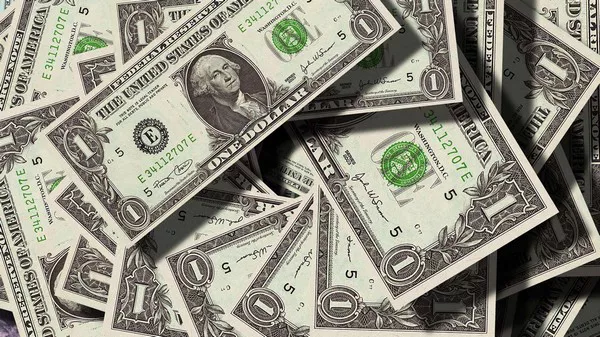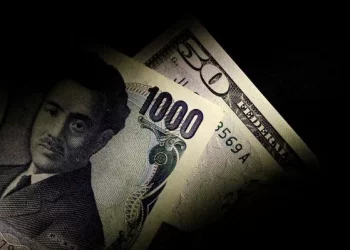Mexico is one of the most popular travel destinations for U.S. tourists, business professionals, and expatriates. Given its close proximity to the United States and strong economic ties, many travelers wonder whether they can use U.S. dollars (USD) for transactions in Mexico. While USD is widely recognized, the primary currency in Mexico is the Mexican peso (MXN). Understanding where and how you can use USD in Mexico, as well as the implications of doing so, is essential for making informed financial decisions during your visit.
1. The Official Currency of Mexico
The official currency of Mexico is the Mexican peso, represented by the symbol “$” or “MXN” in currency exchange contexts. The peso is the legal tender for all transactions, and businesses are expected to list their prices in MXN. However, due to the significant presence of American tourists and expatriates, many businesses—particularly in tourist hotspots—accept U.S. dollars as an alternative form of payment.
2. Where Can You Pay with USD in Mexico?
While USD is not the official currency, there are specific scenarios where you may be able to use it for transactions:
Tourist Areas
In tourist-heavy regions such as Cancun, Playa del Carmen, Tulum, Los Cabos, Puerto Vallarta, and Mexico City’s central districts, many businesses, including hotels, restaurants, and souvenir shops, accept USD. However, they may apply their own exchange rates, which are often less favorable than official rates.
Hotels and Resorts
Many hotels and resorts catering to international guests accept USD for payments, particularly large chains. Some even list their prices in both USD and MXN.
Airport Services
Major airports in Mexico, especially those with significant international traffic, allow payment in USD for services such as taxis, car rentals, and food outlets.
Border Towns
Cities close to the U.S.-Mexico border, such as Tijuana, Ciudad Juárez, and Matamoros, commonly accept USD for goods and services, as cross-border trade is prevalent.
3. Limitations and Drawbacks of Paying with USD
While it is possible to use USD in certain locations, there are notable disadvantages:
Unfavorable Exchange Rates
Merchants accepting USD often set their own exchange rates, which are generally lower than the official rate. This means you may end up paying more than if you had exchanged your dollars for pesos beforehand.
Limited Acceptance in Local Areas
Outside tourist areas and border towns, most businesses only accept pesos. If you travel to smaller towns or rural areas, you will need to pay in MXN.
Change Given in Pesos
Even when a business accepts USD, any change you receive will likely be in pesos. This can be inconvenient if you are not familiar with the exchange rate or if you are not planning to use the remaining pesos.
Transaction Restrictions
Some businesses that accept USD may impose limits on how much you can spend or require exact change. Additionally, government regulations restrict certain transactions in USD to prevent money laundering.
4. Best Practices for Currency Exchange in Mexico
To get the best value when spending money in Mexico, consider the following strategies:
Use Mexican Pesos Whenever Possible
Exchanging USD for pesos ensures you are paying the exact price without the risk of poor exchange rates from merchants. You can obtain pesos through currency exchange services, banks, or ATMs.
Withdraw Pesos from ATMs
Using an ATM to withdraw pesos directly from your bank account often provides a better exchange rate than currency exchange booths or paying in USD at a store. However, check with your bank about foreign transaction fees.
Use Credit or Debit Cards with No Foreign Transaction Fees
Many credit cards offer competitive exchange rates without foreign transaction fees. Using a credit or debit card that provides these benefits can help you save money compared to paying with USD or exchanging cash at suboptimal rates.
Avoid Airport Currency Exchange Booths
Currency exchange booths in airports often have the least favorable rates. If you must exchange money, it is best to do so at a local bank or an ATM.
Monitor Exchange Rates
If you plan to exchange a significant amount of USD, keeping an eye on exchange rate trends can help you convert money when the rate is most favorable.
5. Should You Exchange USD for Pesos Before Traveling to Mexico?
If you plan to visit Mexico, it is a good idea to exchange a small amount of USD for pesos before arriving. This will allow you to cover initial expenses, such as transportation and minor purchases. However, you may get a better exchange rate by withdrawing pesos from an ATM upon arrival.
6. Frequently Asked Questions
Can I use USD to pay for taxis in Mexico?
In some tourist areas and airports, taxis may accept USD, but they will likely use their own exchange rate. It is best to use pesos or ride-hailing services that accept credit cards.
Are there legal restrictions on using USD in Mexico?
Yes, the Mexican government has regulations limiting the amount of USD that can be used in cash transactions. Businesses must adhere to these limits to prevent money laundering.
Can I open a Mexican bank account with USD?
Some banks in Mexico allow USD deposits, but most local transactions are conducted in pesos. Expats and long-term residents may benefit from opening a peso-denominated account.
Is it better to exchange money in the U.S. or Mexico?
Exchange rates are typically more favorable in Mexico. However, it is wise to compare rates at banks, ATMs, and exchange houses before making a decision.
Conclusion
While U.S. dollars are accepted in some parts of Mexico, it is always best to use Mexican pesos for transactions. Paying in pesos ensures you get the best exchange rate and makes it easier to shop in local markets, pay for services, and avoid unnecessary fees. Before traveling, consider exchanging a small amount of USD for pesos and using a mix of cash, ATMs, and credit cards to optimize your spending. By understanding the nuances of currency usage in Mexico, you can make more informed financial decisions and enjoy a smoother travel experience.
Related Topics:


























